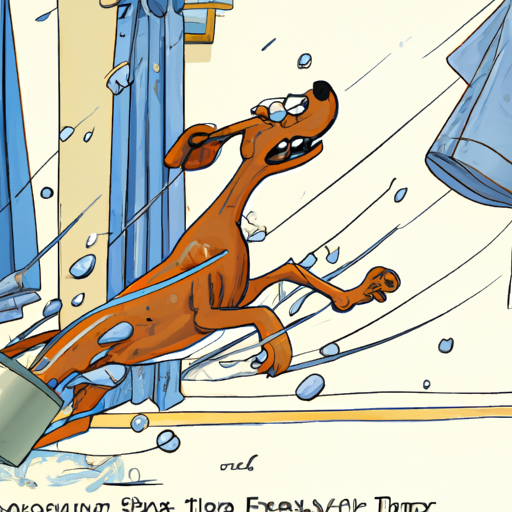As a devoted dog parent, you’ve probably noticed a peculiar phenomenon: your four-legged friend’s mad dash around the house after a bath. This behavior, often accompanied by a gleeful expression, is quite common among dogs of all breeds and ages. But why do they do it? Let’s dive in to explore the reasons behind this curious canine behavior.
Table of Contents
- Excess Energy Release
- Drying Off
- Dislike for Bathing
- Natural Instincts
- Ways to Minimize Post-Bath Zoomies
- Frequently Asked Questions
Key Takeaways
- Dogs run after a bath due to excess energy, the need to dry off, dislike for bathing, and natural instincts.
- Strategies to minimize post-bath zoomies include regular exercise, using absorbent towels, creating a calm bath environment, and using comforting post-bath rituals.
- Understanding your dog’s behavior can improve your relationship and make bath times less stressful.
Excess Energy Release
After staying still for a bath, your dog may have a lot of pent-up energy. The bath itself could also be a source of stress, causing adrenaline release. Once the bath is over, your dog releases this excess energy through running around and acting a little wild. This is often referred to as the “zoomies,” a term dog lovers use to describe the frenzied, high-energy running sessions dogs sometimes engage in.
Drying Off
Dogs may also run around post-bath as a strategy to dry off. The fast movement helps shake off excess water, and rubbing against furniture or carpet can also aid in drying. Some dog breeds have a double coat which is harder to dry, so these dogs might be even more inclined to run around after a bath.
Dislike for Bathing
Some dogs simply don’t enjoy bathing and may run around afterwards as a form of protest or to celebrate their freedom. It’s important to make bath time as stress-free as possible for your dog. Using warm water, a non-slip mat, and a gentle shampoo can help. You might also consider using positive reinforcement, such as treats or toys, to make bathing a more enjoyable experience.
Natural Instincts
Another theory suggests that running after a bath could be a throwback to your dog’s wild ancestors. In the wild, a wet dog would be more noticeable to predators, so running around and rolling might help mask their scent and make them less detectable. This article by the American Kennel Club delves deeper into this fascinating theory.
Ways to Minimize Post-Bath Zoomies
While post-bath zoomies can be entertaining, they can also be messy and potentially dangerous, with the risk of slips and falls. Here are some strategies to minimize post-bath running:
- Regular Exercise: Regular walks and playtime can help burn off excess energy, making your dog less likely to zoom around after a bath. This guide on One Top Dog provides a comprehensive look at different exercise routines for your dog.
- Absorbent Towels: Using highly absorbent towels can help remove more water from your dog’s coat, reducing the need for them to dry off by running around.
- Calm Bath Environment: If your dog dislikes baths, try to make the experience as calming as possible. You could use a soothing shampoo, play relaxing music, or even try a dog anxiety wrap.
- Post-Bath Rituals: A comforting post-bath ritual, like a gentle brush or a cuddle, can help calm your dog down. This article offers some useful grooming tips.
Frequently Asked Questions
Why does my dog run around after a bath?
There could be several reasons, including excess energy, the need to dry off, dislike for bathing, and natural instincts.
Is it bad for dogs to run after a bath?
While it can be entertaining, it can also be messy and potentially dangerous. If possible, try to minimize post-bath zoomies using the strategies discussed above.
How can I calm my dog down after a bath?
Regular exercise, using absorbent towels, creating a calm bath environment, and using comforting post-bath rituals can help.
Understanding your dog’s behavior can deepen your bond and make bath times less stressful. By considering your dog’s needs and instincts, you can create a more positive bathing experience for both of you. Remember, every dog is unique, so it’s essential to adapt these strategies to your dog’s specific needs and personality.



